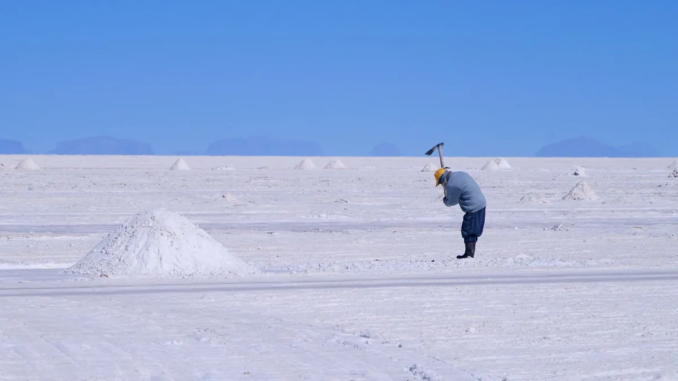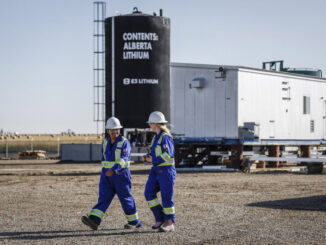
South America, which produces more than half of the world’s identified lithium resources, has not been aided by the abundance of its natural resources.
The ‘lithium triangle,’ where turquoise blue pools glisten against white salt flats, has yet to reap the benefits of the world’s new metal rush, according to a report published by Euronews on Friday.
“We don’t eat lithium, nor batteries. We do drink water,” said Veronica Chavez, 48, president of the Santuario de Tres Pozos Indigenous community near the town of Salinas Grandes in Argentina’s lithium heartland.
The Lithium Triangle is a lithium-rich region in the Andean southwest corner of South America, spanning the borders of Argentina, Bolivia, and Chile and forming a geographic triangle of lithium resources underneath their salt flats.
The “white gold,” lithium is an important component of the batteries used in electric vehicles. Its production has exploded recently as the world tries to shift away from fossil fuels. However, the cost is impoverished neighborhoods living close to these lithium plants.
Lithium’s environmental consequences in the region
As much as 2.2 million liters of water are required to create one ton of lithium, and the extractive industry is endangering the ecosystem and the prospects for a sustainable future for the local population.
“No to lithium, yes to water and life,” reads a poster that meets visitors to Salinas Grandes, as per Euronews.
With an average elevation of 180 meters (590 ft), the Salinas Grandes is a sizable salt flat in central-northern Argentina that straddles the borders of four provinces.
However, with recent reports of trees and flamingos starving to death, there are rising concerns about the impact on groundwater sources in locations already susceptible to protracted droughts.
“It is not, as they say, that they [lithium companies] are going to save the planet,” said Chavez, of Santuario de Tres Pozos in Jujuy province. ”Rather it is us who have to give our lives to save the planet.”
A neighbour, 47-year-old street food seller Barbara Quipildor added fiercely: “I want them to leave us alone, in peace. I don’t want lithium… My concern is the future of my children’s children.”
The South American triangle contains around 56 percent of the 89 million tonnes of lithium deposits that have been detected globally, according to the US Geological Survey (USGS).
The global average price of lithium increased from $5,700 (€5,730) a tonne in November 2020 to $60,500 (€60,780) in September of this year.
According to the USGS, Chile is home to the “westernmost corner of the lithium triangle,” which is located in its Atacama desert and contributed 26 percent to global output in 2021.
However, Chilean legislation has made it challenging for businesses to obtain government favors since the Augusto Pinochet regime designated the metal as a “strategic resource” because of its potential for use in nuclear weapons.
Poor economic challenges
Bolivia has 21 million tons of the 89 million tons of lithium deposits that have been discovered in the world. Argentina comes in second with 19.3 million tons, while Chile comes in third with 9.6 million tons.
Due to the poor economy and more challenging geographical circumstances, Argentina and Bolivia have so far been unable to transform the majority of their natural resources into reserves suitable for commercial production. While as Chile, on the other hand, has been successful.
Meanwhile, the environmental costs are beginning to mount, and the people in the region worry that things could worsen.



